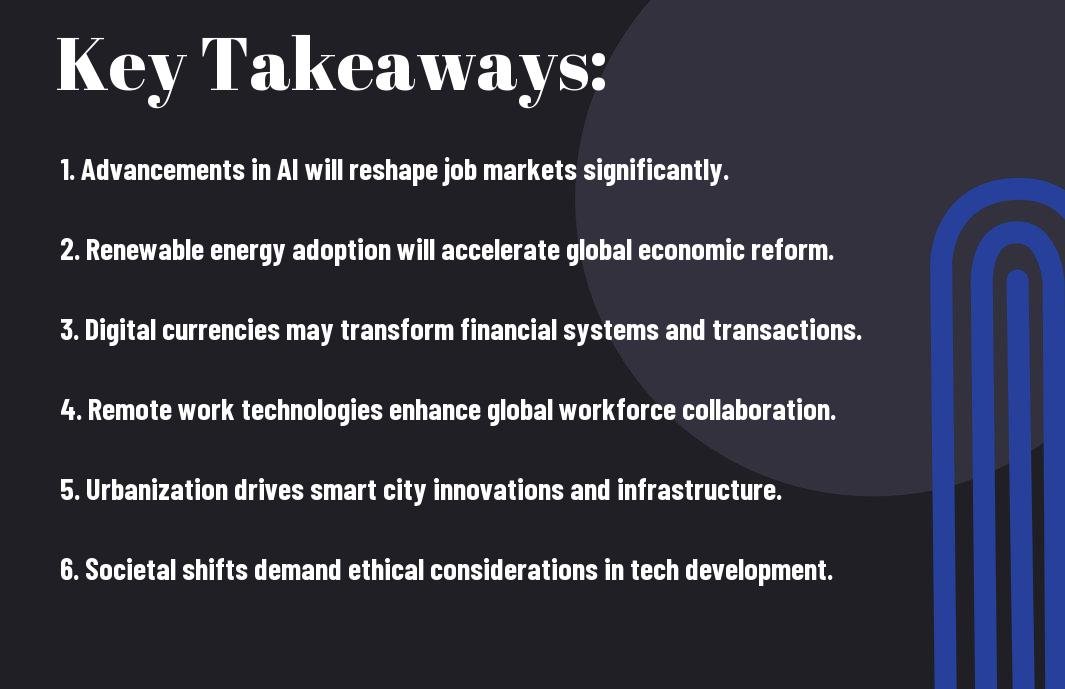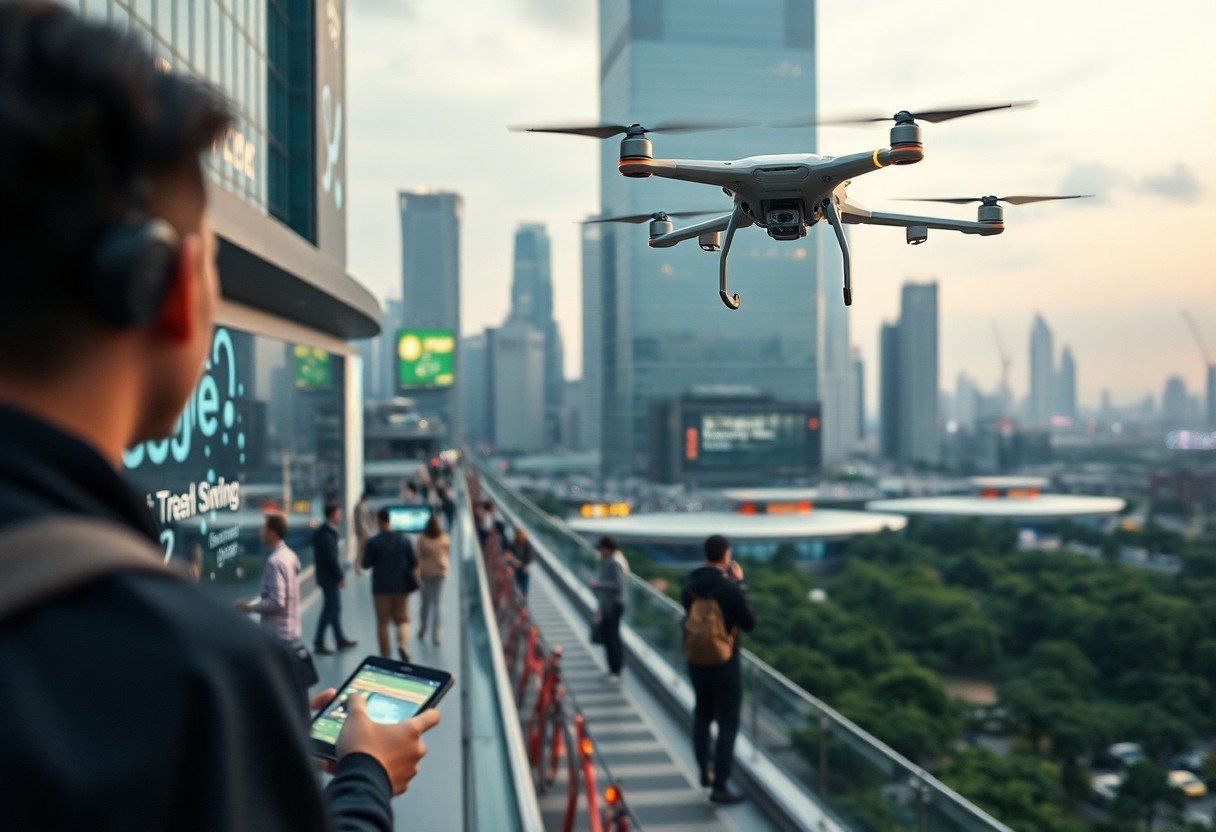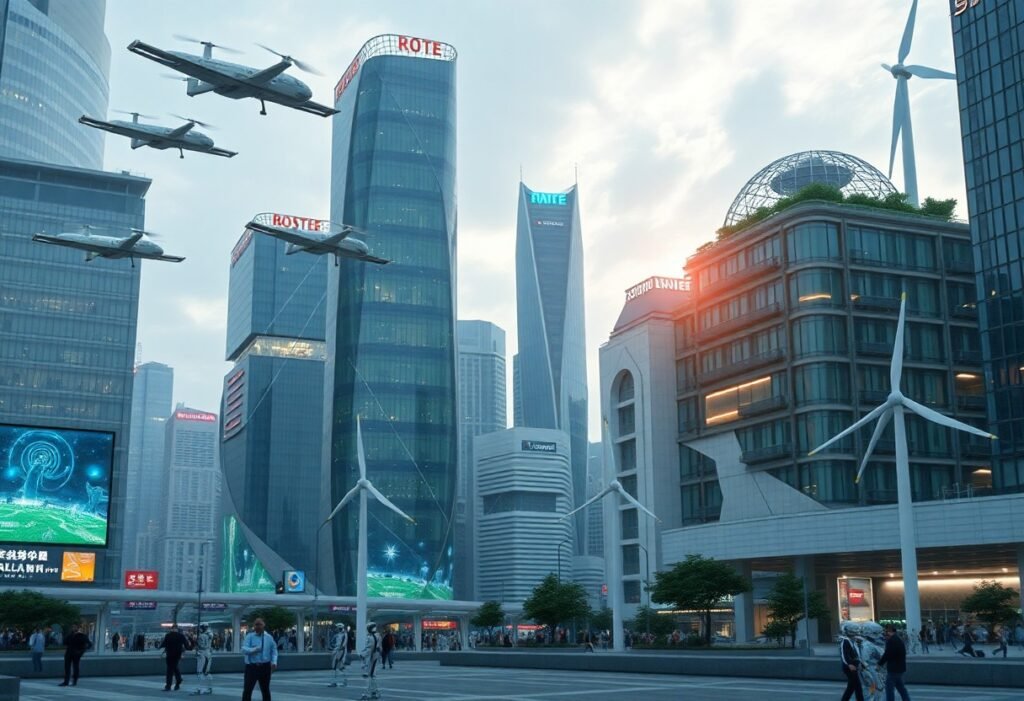Over the next few years, you may witness groundbreaking technological advancements that could significantly reshape your socioeconomic landscape. As various sectors embrace innovations like artificial intelligence, blockchain, and renewable energy, the implications for your life, work, and community could be profound. This blog post will explore how 2025 might usher in a new era of opportunities and challenges, and what you should consider to stay informed and prepared for these rapid changes. Join us as we examine into the potential transformations ahead and how they may impact you directly.


The Current Technological Landscape
While you navigate today’s interconnected world, you’ll find that rapid advancements in technology are influencing every aspect of life. The integration of digital solutions across industries is reshaping economies and societies, culminating in a landscape filled with unprecedented opportunities and challenges. As we look ahead to 2025, understanding the current state of technology is vital for discerning how these developments can act as catalysts for significant socioeconomic change.
Breakthroughs in AI and Automation
Along your journey through technology, you’ll likely encounter remarkable strides in artificial intelligence and automation. These innovations are not only enhancing efficiency but are also redefining workflows across various sectors. As you investigate deeper into these advancements, you’ll see how they empower businesses to optimize operations and improve decision-making processes.
Advancements in Renewable Energy Technologies
Breakthroughs in renewable energy technologies are transforming how you think about energy consumption and environmental impact. By harnessing solar, wind, and other renewable resources, these advancements offer sustainable solutions for future generations.
The shift toward renewable energy stands as a testament to your growing awareness of environmental priorities. Innovations such as more efficient solar panels and advanced battery storage systems are making renewable energy more accessible and reliable than ever before. You will find that as these technologies progress, they not only reduce carbon emissions but also promise to create new job opportunities in green industries, providing a pathway for a more sustainable economic future.
Anticipated Socioeconomic Shifts by 2025
You are likely to witness significant socioeconomic shifts by 2025, driven by advancements in technology and changing global dynamics. As outlined in the Future Focus 2025 Pathways for Progress from the Network of …, these transformations could reshape industries, influence labor markets, and redefine your daily life.
Workforce Transformation and Job Displacement
About 85 million jobs may be displaced by the shift to automation, demanding a substantial reevaluation of workforce skills and roles. Your ability to adapt will be vital in navigating these changes, as businesses focus on reskilling and upskilling to meet new technological demands.
Evolution of Global Economic Models
Shifts in global economic models will redefine how we interact, produce, and consume. You may see a rise in decentralized, tech-driven economies that champion sustainability and social equity.
Plus, these evolving economic models could prioritize collaborative consumption and shared resources, enabling you to participate in a more circular economy. Digital currencies may also reshape financial interactions, making transactions more efficient. Consequently, these changes could foster a culture of innovation and cooperation, leading to new avenues for wealth creation and distribution.
Case Studies of Emerging Technologies
To truly understand the transformative potential of emerging technologies, consider the following case studies that highlight significant advancements and their impacts on society:
- 1. Tesla’s Autopilot: Over 1 million vehicles equipped with advanced driver-assistance systems are paving the way for safer roads.
- 2. Microsoft Azure’s AI Solutions: Businesses using AI to optimize operations reported a 40% increase in efficiency.
- 3. IBM’s Quantum Computing: Achieving quantum supremacy in 2021, IBM’s system can solve problems beyond conventional means.
- 4. Amazon’s Fully Automated Warehouses: Reducing operational costs by up to 20%, these innovations showcase the future of logistics.
- 5. 5G Technology Rollout: Enabling download speeds up to 10 Gbps, 5G supports the growth of IoT devices and smart cities.
Blockchain and Decentralized Finance
Against the backdrop of traditional banking, blockchain technology offers a decentralized alternative that enhances transparency and security. With over $100 billion locked in DeFi protocols in 2023, platforms like Uniswap and Aave are revolutionizing lending and trading. They empower you to have greater control over your finances, eliminating the need for intermediaries.
Biotechnology Innovations and Healthcare
Healthcare has witnessed a paradigm shift through biotechnology innovations, rapidly transforming patient care and treatment methods. Cutting-edge technologies like CRISPR have enabled you to edit genes, providing novel solutions for genetic disorders and diseases.
Hence, the integration of biotechnology into healthcare is paving the way for personalized medicine. With advancements in genomics and diagnostic tools, you can receive tailored treatments that address specific health needs. Innovations such as mRNA vaccines have not only accelerated vaccine development but also exemplify how biotechnological expertise can combat pandemics effectively. As these technologies evolve, your access to improved healthcare solutions is set to expand significantly in the coming years.

Policy Implications and Challenges
Now is the time for policymakers to assess the potential impact of technological advancements by creating frameworks that address both opportunities and risks. As society grapples with rapid innovation, it becomes increasingly important to establish guidelines that support the responsible development and deployment of these technologies. Failure to do so may result in exacerbating existing inequalities and hindering the overall benefit of advancements to society.
Regulatory Frameworks for Innovation
Among the pressing challenges you face in fostering innovation is establishing a regulatory environment that balances supporting new technologies while ensuring public safety and ethical standards. This framework must be adaptable, allowing for flexibility as technologies evolve, yet robust enough to prevent misuse. Striking this balance is vital for encouraging investment and confidence in emerging tech sectors.
Addressing Inequality and Accessibility
Any discussion about tech-driven changes must include the pressing issue of inequality and accessibility. As emerging technologies reshape industries, you need to ensure that all members of society have access to these innovations and can benefit from their advantages. Without intentional policy measures, disparities may deepen, leaving vulnerable populations marginalized and without opportunities.
Consequently, addressing inequality and accessibility becomes not just a moral obligation but also a strategic necessity for sustainable development. You should actively advocate for policies that promote inclusive access to technology, such as affordable internet initiatives and job training programs focused on digital skills. By fostering an environment where everyone can leverage technological advancements, you contribute to a more equitable society, enhancing economic resilience and social cohesion for all individuals.
Global Perspectives on Technological Evolution
Keep an eye on the evolving landscape as varying global perspectives shape our technological future. You can explore the Technology Trends for 2025 You Can’t Afford to Miss. Understanding these dynamics will help you anticipate changes that could impact your life and career, creating opportunities or challenges that require an informed response.
Developed vs. Developing Nations
Perspectives on technological evolution differ markedly between developed and developing nations. In developed countries, rapid innovation often leads to a race in adopting cutting-edge technologies, fostering an environment of continuous advancement. Conversely, developing nations may face infrastructural challenges and resource limitations, which can either slow down their tech adoption or spark innovative solutions tailored to local needs.
Cultural Attitudes Towards Tech Adoption
Along with economic factors, cultural attitudes play a significant role in how you or your community embraces new technologies. Your local context can influence the speed and method of tech adaptation, as some cultures may be more open to innovation while others show caution due to historical or social factors.
For instance, in cultures that prioritize tradition, there might be resistance to adopting technologies perceived as disruptive. Consequently, you may find that tech adoption can vary widely even within regions, as younger generations often embrace technology more readily, promoting digital literacy and transforming interactions. Understanding this cultural context is vital for anyone looking to leverage technology effectively in various global settings.
Possible Scenarios for the Future
All indications point to the possibility of a transformative 2025, driven by technological advancements. Various scenarios could unfold, resulting in societal shifts that redefine how you interact with industry, economy, and each other. Whether these changes bring about widespread improvement or create new challenges will be influenced by the decisions made today and in the immediate future.
Optimistic Projections
Before projecting a bright future, consider that innovative technologies in 2025 could foster inclusivity and accessibility. Remote work may be fully integrated, bridging gaps in rural and urban employment and transforming local economies. You could benefit from enhanced quality of life through smart cities, clean energy, and more efficient healthcare systems.
Potential Risks and Downsides
On the flip side, while advancements are promising, they can bring their own set of challenges. Issues such as job displacement due to automation and increased digital divides could emerge, leaving some communities behind. You might face heightened concerns about privacy and data security as more personal information becomes intertwined with technology.
Understanding the landscape of potential risks requires a deep investigate the societal impacts of rapid technological growth. As innovations unfold, you must stay vigilant about how they influence job markets and social structures. The worry of losing jobs to automation is valid, and it poses significant implications for your economic security. Additionally, the gap between those who can access these technologies and those who cannot may widen, fostering inequality rather than resolving it. Being aware of these challenges enables you to advocate for proactive measures to secure a more equitable future.
Summing up
Ultimately, as you look toward 2025, it’s vital to consider how emerging technologies will reshape your socioeconomic landscape. The potential for revolutionary changes—driven by advancements in AI, renewable energy, and digital currencies—could directly impact your career, lifestyle, and financial stability. Staying informed and adaptable will not only help you navigate these changes but also empower you to harness new opportunities in this rapidly evolving environment. Preparing for a tech-driven future can ultimately position you for success in these transformative times.









